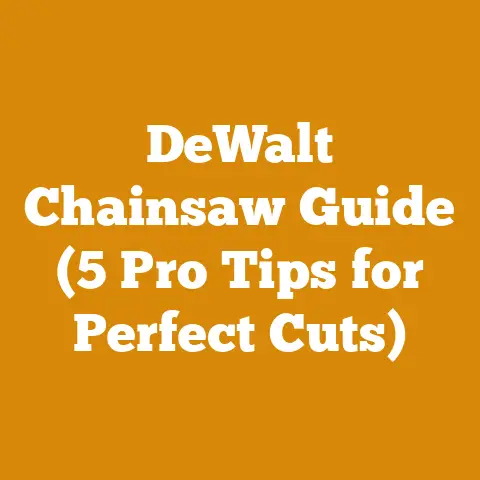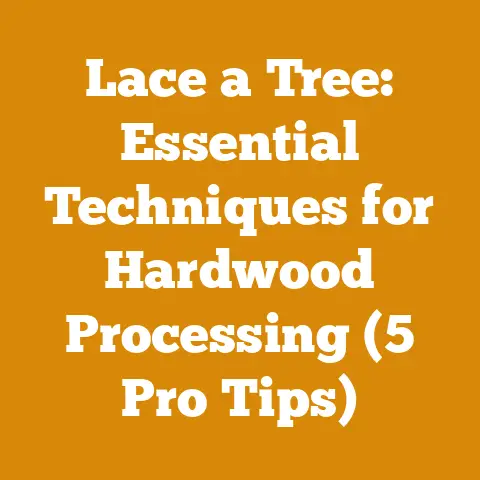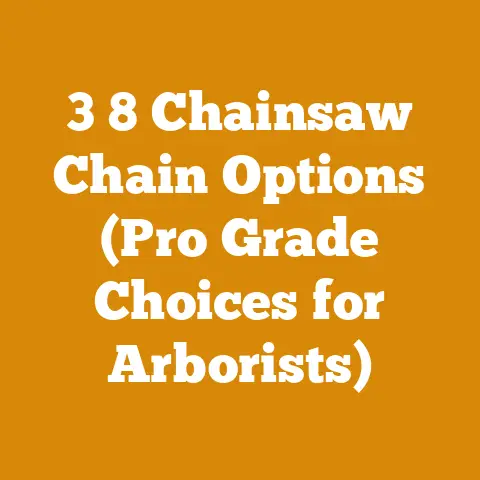Pruning Eastern Redbud (5 Pro Arborist Tips for Healthy Growth)
Pruning Eastern Redbud: 5 Pro Arborist Tips for Healthy Growth and Budgeting Your Tree Care
Eastern Redbud ( Cercis canadensis) trees are a springtime delight, painting landscapes with their vibrant pink blossoms. But maintaining their beauty and ensuring healthy growth requires proper pruning. As an avid woodworker and occasional tree pruner, I’ve learned that knowing how to prune is just as important as understanding the potential costs involved – whether you’re DIYing or hiring a professional. This article provides five essential pruning tips from seasoned arborists, along with a detailed breakdown of the costs you can expect, to help you keep your Redbud thriving and your budget in check.
Why Pruning Matters: Functionality and Cost Implications
Pruning isn’t just about aesthetics; it’s about the long-term health and structural integrity of your tree. By removing dead, damaged, or crossing branches, you improve airflow, reduce the risk of disease, and encourage stronger growth. Functionality of pruning will ensure your tree will have strong limb structure. This translates to a longer lifespan for your Redbud and fewer costly problems down the road, such as branch failures or the need for expensive tree removal. In addition, trees that are properly maintained and pruned add value to your property and are more aesthetically pleasing.
The Cost of Neglect
Neglecting pruning can lead to a host of problems that ultimately cost you more. Weakened branches are more susceptible to storm damage, potentially leading to property damage and hefty removal bills. Untreated diseases can spread, jeopardizing the entire tree. A misshapen, overgrown tree can even devalue your property.
Pro Arborist Tip #1: Timing is Everything
The best time to prune Eastern Redbuds is in late winter or early spring, before the new growth emerges. This allows the tree to heal quickly and direct its energy into developing healthy new branches.
Cost Considerations for Timing
- DIY vs. Professional: Pruning during the dormant season is generally easier, as the tree’s structure is more visible. If you’re comfortable doing it yourself, you’ll save on labor costs. However, larger or more complex pruning jobs are best left to professionals, regardless of the season.
- Emergency Pruning: Pruning damaged branches after a storm can be more expensive. Emergency tree service can range from \$150-\$500, depending on the size and complexity of the job. Preventative pruning can minimize the likelihood of needing emergency services.
Pro Arborist Tip #2: Know Your Cuts
There are two primary types of pruning cuts:
- Heading Cuts: These cuts shorten a branch back to a bud or lateral branch. They stimulate growth near the cut, making the tree denser. Avoid excessive heading cuts on Redbuds, as they can lead to weak branch unions.
- Thinning Cuts: These cuts remove an entire branch at its point of origin or back to a larger lateral branch. They improve airflow and light penetration, promoting healthy growth throughout the tree.
Cost Implications of Cutting Techniques
- DIY Mistakes: Improper cuts can damage the tree and create entry points for disease, leading to future problems and potential costs.
- Professional Expertise: Arborists are trained to make precise cuts that minimize stress on the tree and promote healthy growth. Their expertise can save you money in the long run by preventing future problems.
- Equipment Costs: Depending on the size of the branches you need to cut, you may need loppers, pruning saws, or even a chainsaw. The cost of these tools can range from \$30 to \$300 or more.
Pro Arborist Tip #3: Prioritize Dead, Damaged, and Diseased Wood
The first step in any pruning job is to remove any dead, damaged, or diseased branches. This is crucial for preventing the spread of disease and improving the overall health of the tree.
Cost Savings Through Early Intervention
- Disease Control: Removing diseased branches promptly can prevent the disease from spreading to the rest of the tree, potentially saving it from needing to be removed entirely. Tree removal costs can range from \$500 to \$2,000 or more, depending on the size and location of the tree.
- Safety: Removing dead or damaged branches reduces the risk of them falling and causing injury or property damage. This can save you from potential liability costs.
- Wood Disposal: Depending on local regulations, you may need to pay for the disposal of diseased wood. Check with your local municipality for guidelines and costs.
Pro Arborist Tip #4: Shape for Structure and Beauty
Once you’ve removed the problem branches, you can start shaping the tree to improve its structure and aesthetics. Focus on:
- Removing crossing or rubbing branches: These can create wounds that allow disease to enter.
- Creating a balanced canopy: This allows for even light penetration and airflow.
- Maintaining the tree’s natural form: Avoid excessive pruning that can distort the tree’s shape.
Cost of Shaping and Aesthetic Pruning
- Professional Shaping: Arborists can shape your Redbud to enhance its natural beauty and promote healthy growth. The cost of shaping can range from \$100 to \$500, depending on the size and complexity of the job.
- Long-Term Value: A well-shaped tree is more aesthetically pleasing and can increase the value of your property.
- DIY Learning Curve: Shaping a tree takes practice and knowledge. If you’re unsure, it’s best to consult with a professional.
Pro Arborist Tip #5: Don’t Over-Prune
It’s tempting to prune too much, especially when you’re trying to achieve a specific shape. However, over-pruning can stress the tree and make it more susceptible to disease. As a general rule, don’t remove more than 25% of the tree’s canopy in a single year.
Cost of Over-Pruning
- Tree Weakening: Over-pruning weakens the tree, making it more vulnerable to pests and diseases. This can lead to costly treatments or even tree removal.
- Reduced Flowering: Over-pruning can reduce the number of flowers the tree produces, diminishing its aesthetic appeal.
- Rehabilitation Costs: A severely over-pruned tree may require special care to recover, potentially incurring additional costs.
Understanding the Costs: A Detailed Breakdown
Now, let’s delve into the specifics of pricing. Whether you decide to DIY or hire a professional, understanding the cost factors involved is crucial.
1. DIY Pruning Costs
If you choose to tackle the pruning yourself, you’ll need to factor in the following costs:
- Tools:
- Pruning Shears: \$20 – \$50 (for smaller branches)
- Loppers: \$30 – \$70 (for branches up to 2 inches in diameter)
- Pruning Saw: \$25 – \$60 (for larger branches)
- Chainsaw (optional): \$100 – \$500 (for very large branches; use with caution)
- Ladder: \$50 – \$200 (if needed to reach higher branches)
- Safety Gear: \$30 – \$100 (gloves, eye protection, helmet)
- Disposal:
- Yard Waste Bags: \$10 – \$20
- Chipping Service (optional): \$50 – \$150 per hour (if you want to chip the branches)
- Landfill Fees (if applicable): Varies by location
- Time: Your time is valuable! Factor in the hours you’ll spend pruning and disposing of the branches.
Example DIY Scenario:
Let’s say you need to prune a small to medium-sized Eastern Redbud. You already have a ladder and some basic gardening gloves. You’ll need to purchase pruning shears (\$30), loppers (\$50), and a pruning saw (\$40). You’ll also need yard waste bags (\$15). Your total cost would be \$135. Assuming it takes you 4 hours to complete the job, you’ll also need to factor in the value of your time.
2. Professional Pruning Costs
Hiring a professional arborist offers several advantages, including expertise, safety, and efficiency. However, it also comes with a higher cost. Here’s a breakdown of the factors that influence professional pruning costs:
- Tree Size and Complexity: Larger trees with more branches and complex structures will require more time and effort to prune, resulting in higher costs.
- Tree Location and Accessibility: Trees that are difficult to access (e.g., located near power lines or buildings) will be more expensive to prune.
- Type of Pruning: Simple pruning tasks, such as removing dead or damaged branches, will be less expensive than more complex shaping or structural pruning.
- Arborist’s Experience and Credentials: Certified arborists with years of experience will typically charge more than less experienced tree workers.
- Geographic Location: Pruning costs can vary depending on your location, with urban areas generally having higher prices than rural areas.
- Disposal Fees: Many arborists include disposal fees in their quotes, while others charge them separately.
- Permits: Depending on your location and the size of the tree, you may need to obtain a permit before pruning. The cost of permits can vary widely.
Average Professional Pruning Costs:
- Small Tree (under 15 feet): \$75 – \$250
- Medium Tree (15-30 feet): \$150 – \$500
- Large Tree (over 30 feet): \$300 – \$1,000+
Factors Influencing Price Fluctuations:
- Seasonality: Demand for tree services tends to be higher in the spring and fall, which can drive up prices.
- Weather: Storms can create a surge in demand for tree services, leading to higher prices.
- Fuel Costs: Fluctuations in fuel costs can affect the price of tree services, as arborists need to transport equipment and personnel to the job site.
Getting a Quote:
When getting a quote from an arborist, be sure to:
- Get multiple quotes: Compare prices from different arborists to ensure you’re getting a fair deal.
- Ask for a detailed breakdown: Understand exactly what’s included in the quote, such as disposal fees and permit costs.
- Check for insurance and licensing: Make sure the arborist is properly insured and licensed to protect yourself from liability.
- Ask for references: Contact previous clients to get feedback on the arborist’s work.
Example Professional Scenario:
You have a medium-sized Eastern Redbud that needs to be pruned to remove dead branches and improve its shape. You get quotes from three different arborists:
- Arborist A: \$300 (includes disposal)
- Arborist B: \$250 (plus \$50 for disposal)
- Arborist C: \$350 (includes disposal and a one-year warranty)
Based on these quotes, you might choose Arborist B, as they offer the lowest overall price. However, you should also consider the arborists’ experience, credentials, and references before making a final decision.
3. Wood Disposal Costs
Whether you DIY or hire a professional, you’ll need to dispose of the pruned branches. Here are a few options and their associated costs:
- Curbside Yard Waste Collection: Many municipalities offer curbside yard waste collection services. The cost of these services can vary, but they are often included in your property taxes.
- Chipping: You can rent a wood chipper and chip the branches yourself. Chipper rentals typically cost \$50 – \$150 per day. Alternatively, you can hire a professional to chip the branches for you. Chipping services typically cost \$50 – \$150 per hour.
- Hauling to a Landfill: You can haul the branches to a landfill yourself, but you’ll need a truck or trailer. Landfill fees vary by location, but they typically range from \$50 – \$100 per load.
- Firewood: If the branches are large enough, you can cut them into firewood. However, Eastern Redbud wood is not a particularly desirable firewood species, as it doesn’t produce much heat.
- Creative Reuse: Consider using the branches for other purposes, such as making garden stakes or creating a brush pile for wildlife.
Cost Comparison Table:
| Disposal Method | Cost | Pros | Cons |
|---|---|---|---|
| Curbside Yard Waste Collection | Included in property taxes (usually) | Convenient, environmentally friendly | May have restrictions on the size and type of branches you can dispose of |
| Chipping | \$50 – \$150 per day (rental) or \$50 – \$150 per hour (service) | Reduces the volume of waste, creates mulch for your garden | Requires renting or hiring equipment, can be time-consuming |
| Hauling to a Landfill | \$50 – \$100 per load | Quick and easy | Not environmentally friendly, requires a truck or trailer |
| Firewood | Free | Provides fuel for your fireplace or wood stove | Eastern Redbud is not a great firewood species, requires cutting and splitting |
| Creative Reuse | Free | Environmentally friendly, can add visual interest to your garden | Requires creativity and effort, may not be suitable for all types of branches |
4. Hidden Costs and Contingency Planning
When budgeting for pruning, it’s important to account for potential hidden costs and unexpected problems. Here are a few things to keep in mind:
- Permits: As mentioned earlier, you may need to obtain a permit before pruning. Be sure to check with your local municipality to determine if a permit is required and what the cost will be.
- Unexpected Damage: Sometimes, pruning can reveal hidden damage or decay that requires additional work. Be prepared to adjust your budget if this occurs.
- Disease Treatment: If you discover a disease while pruning, you may need to treat the tree to prevent it from spreading. The cost of disease treatment can vary depending on the type of disease and the size of the tree.
- Stump Removal: If you decide to remove a tree entirely, you’ll need to factor in the cost of stump removal. Stump removal can range from \$100 to \$400 or more, depending on the size of the stump.
- Property Damage: Accidents can happen during pruning. Be sure to choose an arborist who is properly insured to protect yourself from liability in case of property damage.
Contingency Planning:
It’s always a good idea to set aside a contingency fund to cover unexpected costs. A general rule of thumb is to add 10-15% to your budget for contingencies.
Cost Optimization Tips
Now that you understand the various cost factors involved in pruning, here are a few tips for optimizing your budget:
- Prune Regularly: Regular pruning can prevent minor problems from becoming major ones, saving you money in the long run.
- DIY When Possible: If you’re comfortable doing it yourself, you can save on labor costs by tackling smaller pruning jobs.
- Shop Around for Quotes: Get multiple quotes from different arborists to ensure you’re getting a fair deal.
- Consider Seasonal Discounts: Some arborists offer discounts during the off-season.
- Ask About Payment Plans: Some arborists offer payment plans to make the cost of pruning more manageable.
- Negotiate: Don’t be afraid to negotiate the price with the arborist.
- Bundle Services: If you need other tree services, such as tree removal or stump grinding, consider bundling them together to save money.
- Do Your Research: Before hiring an arborist, do your research to ensure they are qualified and reputable.
Case Studies: Budgeting for Eastern Redbud Pruning
To illustrate the budgeting process, let’s look at a couple of case studies:
Case Study 1: Small Eastern Redbud in a Suburban Yard
- Tree Size: 12 feet tall
- Pruning Needs: Removal of dead and crossing branches, light shaping
- DIY or Professional: DIY
- Estimated Costs:
- Pruning shears: \$30
- Loppers: \$50
- Yard waste bags: \$15
- Total: \$95
- Time Investment: 3 hours
Case Study 2: Large Eastern Redbud Near Power Lines
- Tree Size: 35 feet tall
- Pruning Needs: Removal of dead, damaged, and diseased branches, structural pruning to improve clearance from power lines
- DIY or Professional: Professional
- Estimated Costs:
- Professional pruning: \$600
- Permit (if required): \$50
- Total: \$650
- Time Investment: None (handled by the arborist)
These case studies illustrate how the cost of pruning can vary depending on the size and location of the tree, as well as the complexity of the pruning needs.
Industry Benchmarks and Statistical Data
To provide a broader context for pruning costs, here are some industry benchmarks and statistical data:
- Average Cost of Tree Pruning in the US: \$468 (HomeAdvisor)
- Average Hourly Rate for Arborists: \$75 – \$150 (Thumbtack)
- Percentage of Homeowners Who Prune Their Own Trees: 40% (National Gardening Association)
- Common Reasons for Hiring a Professional Arborist: Safety concerns, lack of expertise, large or complex trees
Data Sources:
- HomeAdvisor: https://www.homeadvisor.com/
- Thumbtack: https://www.thumbtack.com/
- National Gardening Association: https://garden.org/
Actionable Takeaways and Next Steps
Pruning your Eastern Redbud is essential for its health, beauty, and longevity. By understanding the five pro arborist tips and the cost factors involved, you can make informed decisions about whether to DIY or hire a professional. Here are some actionable takeaways:
- Assess your skills and comfort level: If you’re comfortable with basic pruning tasks, you can save money by DIYing.
- Get multiple quotes from qualified arborists: Compare prices and services to find the best value.
- Factor in all costs, including tools, disposal, and permits.
- Plan for contingencies: Set aside a contingency fund to cover unexpected costs.
- Prune regularly to prevent minor problems from becoming major ones.
Next Steps:
- Inspect your Eastern Redbud: Assess its condition and identify any pruning needs.
- Decide whether to DIY or hire a professional.
- If hiring a professional, get quotes from multiple arborists.
- Create a budget that includes all anticipated costs.
- Schedule the pruning and enjoy the beauty of your healthy, well-maintained Eastern Redbud!
Conclusion
Pruning Eastern Redbud trees, while seemingly straightforward, involves a nuanced understanding of both horticultural principles and the associated costs. Whether you’re a seasoned gardener or a first-time homeowner, approaching this task with informed knowledge will ensure the health and beauty of your tree while keeping your budget in check. By following the pro arborist tips and carefully considering the cost factors outlined in this article, you can confidently prune your Eastern Redbud and enjoy its vibrant blossoms for years to come. Remember, a little planning and preparation can go a long way in achieving a healthy tree and a happy wallet.






